What Are Archives?
In the course of daily life, individuals and organizations create and keep information about their personal and business activities. Archivists identify and preserve these documents of lasting value.
These records — and the places they are kept — are called “archives.” Archival records take many forms, including correspondence, diaries, financial and legal documents, photographs, and moving image and sound recordings. All state governments as well as many local governments, schools, businesses, libraries, and historical societies, maintain archives.

Using the Photographic Archive as a Resource for Research and Ideas
For your Personal Investigation you have to engage with a notion of an archive. Archives can be a rich source for finding starting points on your creative journey. This will strengthen your research and lead towards discoveries about the past that will inform the way you interpret the present and anticipate the future.
Public archives in Jersey
Jersey Archives: Since 1993 Jersey Archive has collected over 300,000 archival records and it is the island’s national repository holding archival material from public institutions as well as private businesses and individuals. To visit click here
Jersey Archive can offer guidance, information and documents that relate to all aspects of the Island’s History. It also holds the collections of the Channel Islands Family History Society.


Societe Jersiaise: Photographic archive of 100,000 images dating from the mid-1840s to the present day. 35,000 historical images in the Photographic Archive are searchable online here.
Societe Jersiaise also have an extensive library with access to may publications and records relating to the island’s history, identity and geography. Click here

Archisle: The Jersey Contemporary Photography Programme, hosted by the Société Jersiaise aims to promote contemporary photography through an ongoing programme of exhibitions, education and commissions.
The Archisle project connects photographic archives, contemporary practice and experiences of island cultures and geographies through the development of a space for creative discourse between Jersey and international practitioners.
Link: http://www.archisle.org.je/
Private archives:Family photo-albums, objects, letters, birth-certificates, legal documents etc.
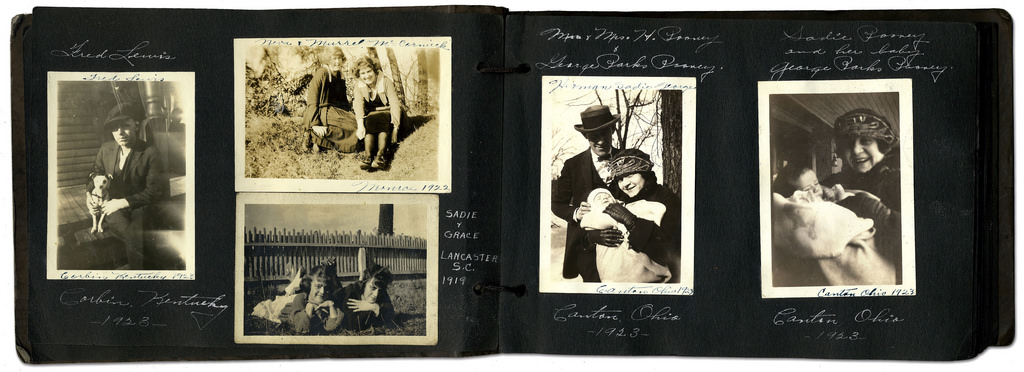
Digital images stored on mobile phones, uploaded on social media etc.

HOMEWORK TASK
Essay: How are archives a repository of knowledge?
DEADLINE: WED 11 OCT
Write a 1000 word essay and answer this question:
How do archives function as repositories of knowledge?
To answer this question you need to reflect on the Photo-Archive’ presentation by Patrick Cahill on Wed 29 September at the Société Jersiaise.
In addition, research at least one photographers from the list below in the photo-archive and choose one image that references some of the early photographic processes, such as daguerreotype, calotype, salt paper prints, wet plate collodion, albumen prints, autochrome and colour transparencies as part of the origins and evolution of photography and include it in your essay.
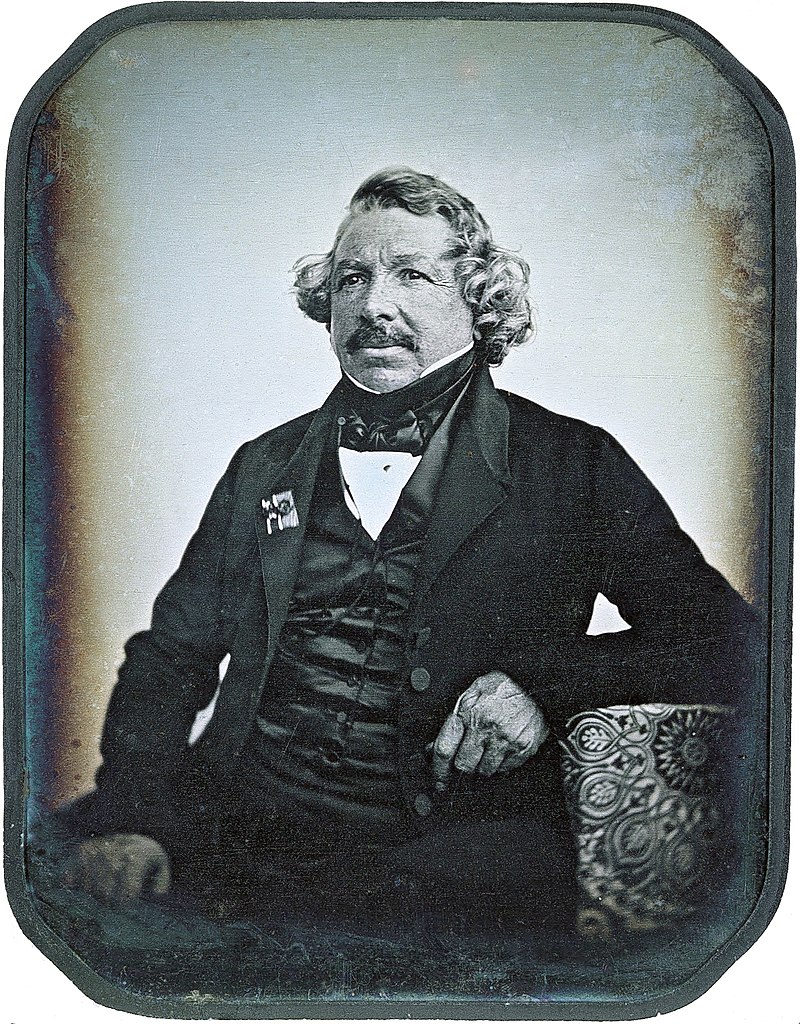

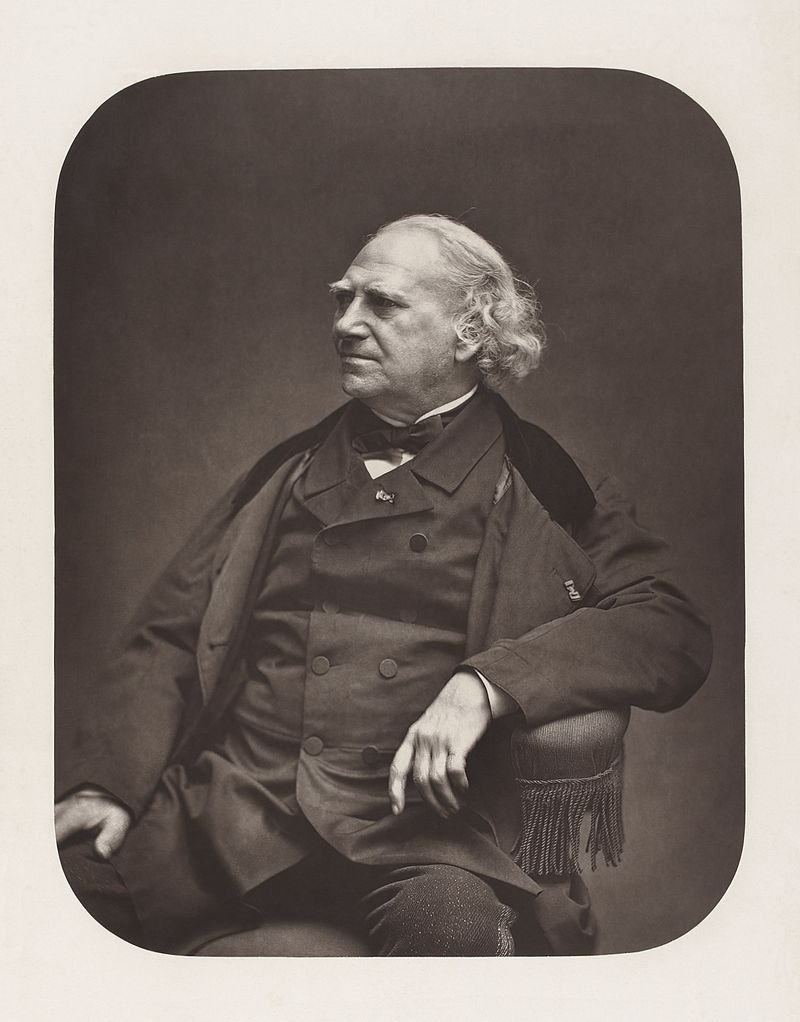

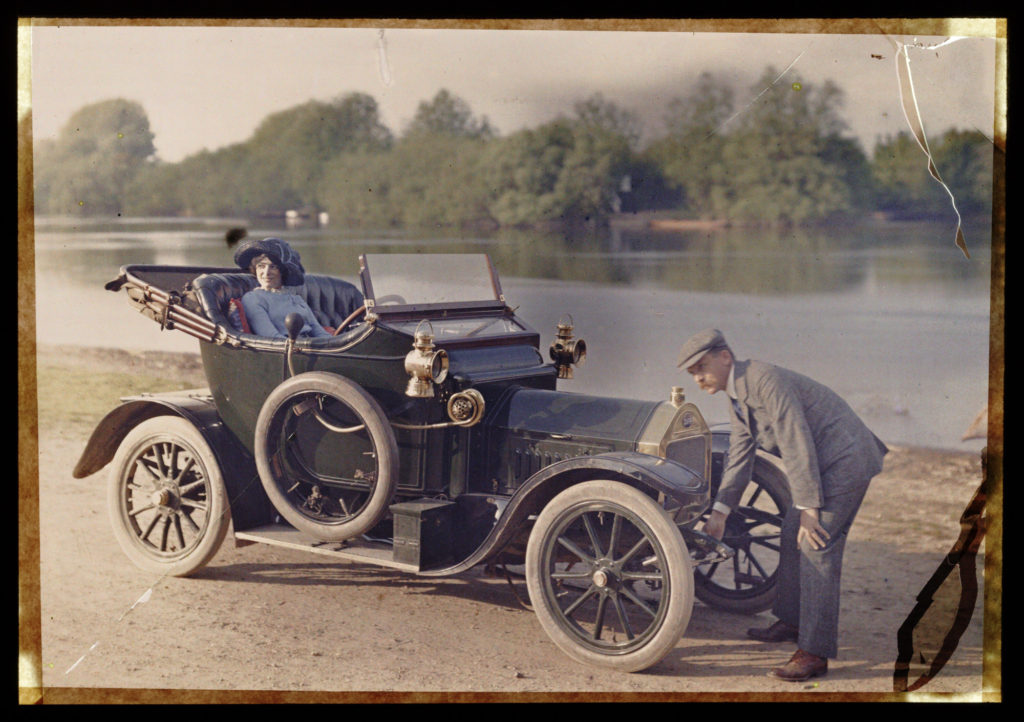

Use this simple essay structure:
Hypothesis: How are archives a repository of knowledge?
Opening quote: choose appropriate quote from key texts below.
Introduction (250 words): write a brief overview of the Societe Jersiaise Photographic Archive; its origin, development, scope, context and early photographic activity in Jersey. What can we learn about Jersey from looking at pictures of the past? Within this context consider also more broadly, what archives you keep and how you organise them eg. images on your mobile, text messages etc. and what knowledge they provide about you as an individual and society at large.
Pg 1 (250 words): Choose one photographer from the archive and provide a brief overview of his/ her practice in context of the essay question. Describe what knowledge we can gain from studying his/her images and photographic work.
Pg 2 (250 words): Choose one key image for analysis using model of photo literary below. Discuss photographic methods and processes used in the image making process. Again consider how this image provide new information.
Conclusion (250 words): Refer back to the essay question and consider; how we can learn from images of the past? And, how they may inform us about our social history (branch of history that emphasizes social structures and the interaction of different groups in society)? Reflect also on how archives and images from the past may help you to develop your own photographic project around theme of Nostalgia. How would you respond as photographer to what you have learned?
RESOURCES AND READING
For a better understanding of photo archives, origins of photography and associated photographic theories please read and study the following documents and hyperlinks to texts. In your essay try and identify relevant quotes, or paraphrase or summarise an idea, theory or concept that you can use from these literary sources that add context and either support or disapprove your own argument.
Image analysis: use Photo Literacy as a method of analysis: of TECHNICAL>VISUAL>CONTEXTUAL>CONCEPTUAL

Essay writing: For more help and guidance on how to write a good essay, including how to use Harvard System of Referencing, click here
Societe Jersiaise Photographic Archive: Here is a link to Intro to the Photo Archive which you all must read in order to answer the essay question above. In addition, here is a pdf of how to search the online catalogue and request images from the photo-archive.
Below is a link to a bit biography about some of the main photographers in the SJ collections. To view images and select key image for analysis go to this folder here;
M:\Departments\Photography\Students\NOSTALGIA\SJ Photo-Archive
SJ Photo-Archive – historical context
Henry Mullins
William Collie
Ernest Baudoux
Clarence P Ouless
Francis Foot
Charles Hugo
Edwin Dale
Percival Dunham
Thomas Sutton
Albert Smith
Emile F Guiton

Archisle – contemporary approach
Michelle Sank: Insula
Martin Parr: Liberation
Yury Toroptsov: Fairyland
Tom Pope ( I am not Tom Pope, You are all Tom Pope)
Jonny Briggs (Unpalatable Truths)
Tanja Deman (Sunken Garden)
Lewis Bush (Trading Zones)
Martin Toft: Atlantus, Masterplan and Becque a Barbe





Emile F. Guiton > Autochromes: The founding father of the Societe Jersiaise Photographic Archive was also a very accomplished photographer who experimented with early colour photography in the beginning of the 20th century. Read this essay by Archivist Patrick Cahill on Guiton’s still-life images of flowers in a vase and other domestic scenes using Autochrome – the first commercially available colour process.




Read Patrick Cahill’s: The Autochromes of Emile GuitonDOWNLOAD
National Science and Media Museum: History of the Autochrome: the Dawn of Colour Photography
Archives in contemporary photography: Also read text about the resurgence of archives in contemporary photography by theorist David Bate: archives-networks-and-narratives_low-res, make notes and reference it by incorporating quotes into your essay to widen different perspectives. Comment on quotes used to construct an argument that either support or disapprove your own point of view.
Origins of Photography: Study this Threshold concept 2: Photography is the capturing of light; a camera is optional developed by PhotoPedagogy which includes a number of good examples of early photographic experiments and the camera obscura which preceded photography. It also touches on photography’s relationship with light and reality and delve into photographic theories, such as index and trace as a way of interpreting the meaning of photographs.
Photography did not spring forth from nowhere: in the expanding capitalist culture of the late 18th and 19th centuries, some people were on the look-out for cheap mechanical means for producing images […] photography emerged experimentally from the conjuncture of three factors: i) concerns with amateur drawing and/or techniques for reproducing printed matter, ii) light-sensitive materials; iii) the use of the camera obscura
— Steve Edwards, Photography – A Very Short Introduction
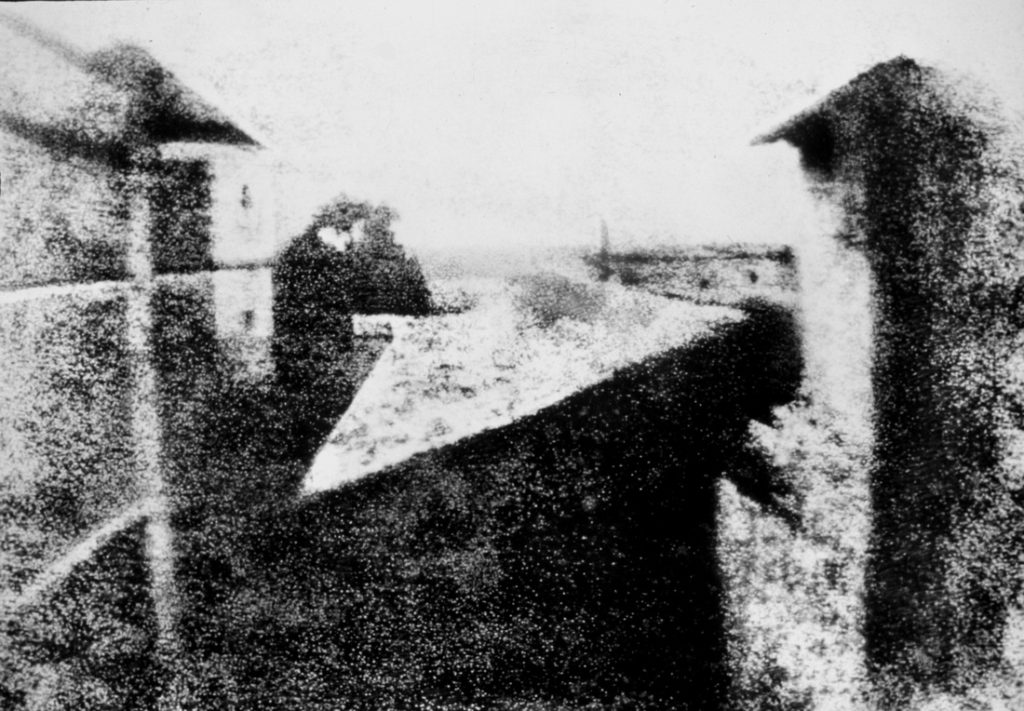

Debates about the origins of photography have raged since the first half of the nineteenth century. The image above left is partly the reason. View from the Window at Le Gras is a heliographic image and arguably the oldest surviving photograph made with a camera. It was created by Nicéphore Niépce in 1826 or 1827 at Saint-Loup-de-Varennes, France. The picture on the right is an enhanced version of the original which shows a view across some rooftops. It is difficult to tell the time of day, the weather or the season. This is because the exposure time for the photograph was over eight hours.
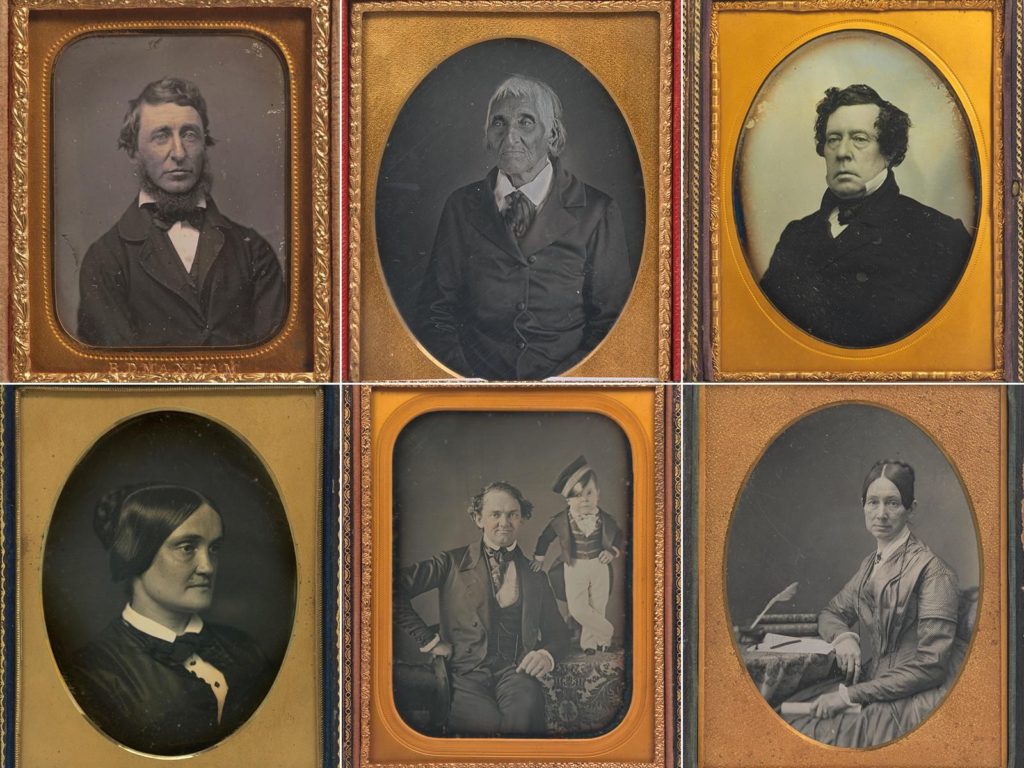
What is a daguerreotype?
The daguerreotype was the first commercially successful photographic process (1839-1860) in the history of photography. Named after the inventor, Louis Jacques Mandé Daguerre, each daguerreotype is a unique image on a silvered copper plate.
In contrast to photographic paper, a daguerreotype is not flexible and is rather heavy. The daguerreotype is accurate, detailed and sharp. It has a mirror-like surface and is very fragile. Since the metal plate is extremely vulnerable, most daguerreotypes are presented in a special housing. Different types of housings existed: an open model, a folding case, jewelry…presented in a wooden ornate box dressed in red velvet. LD a theatre set designer
The invention of photography, however, is not synonymous with the invention of the camera. Cameraless images were also an important part of the story. William Henry Fox Talbot patented his Photogenic Drawing process in the same year that Louis Daguerre announced the invention of his own photographic method which he named after himself. Anna Atkins‘ British Algae: Cyanotype Impressions of 1843 is the first use of photographic images to illustrate a book. This method of tracing the shapes of objects with light on photosensitive surfaces has, from the very early days, been part of the repertoire of the photographer.
 Henry Fox Talbot – Latticed Window, 1835
Henry Fox Talbot – Latticed Window, 1835
In the month of August 1835, William Henry Fox Talbot produced the first photographic negative to have survived to this day. The subject is a window. Despite the clear connection, it is an entirely different image compared to those of his colleagues Niépce and Daguerre. Those are photographs taken from a window, while this is the photograph of a window. From the issue of realism, we shift here into an extremely modern outlook which today would be likened to conceptual and metalinguistic discourse. While the window constitutes the most immediate metaphor to refer to photography, Talbot doesnʼt use it but more simply he photographs it. He thus takes a photograph of photography. The first to comment on this was the author himself, writing a brief note (probably added when it was displayed in 1839) on the card upon which it is mounted. The complete text reads:
Latticed Window (with the Camera Obscura)
August 1835 When first made, the squares of glass, about 200 in number could be counted, with help of a lens6
In 1978, the German photographer Floris Neusüss visited Lacock Abbey to make photograms of the same window. He returned again in 2010 for the Shadow Catchers exhibition at the V&A to create a life-sized version of Talbot’s window (below right).

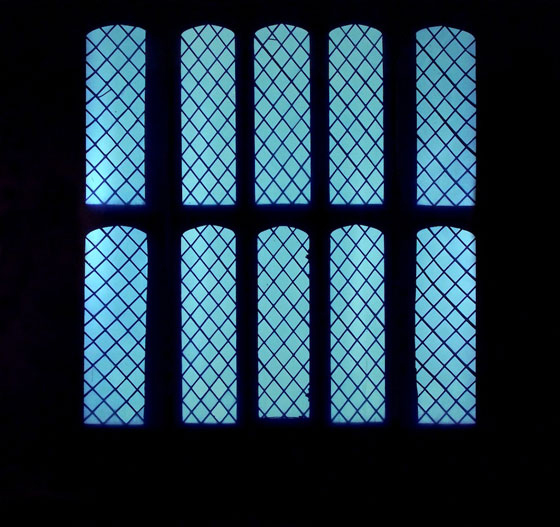
That 1978 photogram was the start of our adventures in creating photograms of large objects in the places where we found them […] we took our equipment to Lacock Abbey and made a photogram of a fixed subject. This particular subject was for us not just a window in a building but an iconic window, a window on photography, opened by Talbot. The window is doubly important, because to be able to invent the photograph, Talbot first used photograms to test the light sensitivity of chemicals. His discovery became a window on the world. I wonder what percentage of our understanding of the planet we live on now comes from photographs?
— Floris Neusüss
The idea of photographs functioning like windows makes total sense. Like the camera viewfinder, windows frame our view of the world. We see through them and light enters the window so that we can see beyond. Photographs present us with a view of something. However, it might also be possible to think of photographs as mirrors, reflecting our particular view of the world, one we have shaped with our personalities, our subconscious motivations, so that it represents how our minds work as well as our eyes. The photograph’s glossy surface reflects as much as it frames. Of course, some photographs might be both mirrors and windows. If you’re interested in thinking a bit more about this you might want to check out this resource.
